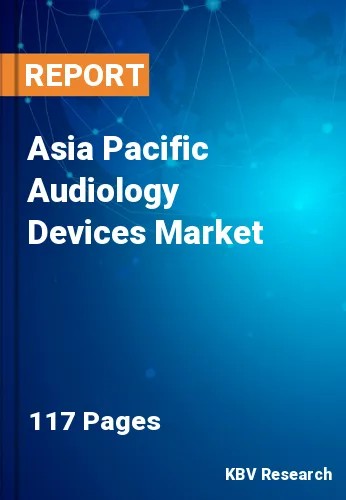The Asia Pacific Audiology Devices Market would witness market growth of 6.7% CAGR during the forecast period (2022-2028).
Digital hearing aids contain all the advantages of analog programmable hearing aids, but they provide a perfect duplication of sound by converting sound waves into digital impulses. Digital hearing aids have computer chips that analyze speech and other surrounding noises. Digital hearing aids enable more intricate sound processing during the amplification process, which could enhance their performance in some circumstances.
For example, background noise or whistle reduction. Additionally, they feature more programming options for hearing aids, allowing the sound they emit to be tailored to a particular pattern of hearing loss. Multiple program memories can also be saved and operated with digital hearing aids. Nowadays, the only options available to those who require hearing aids are digital technology.
Due to a substantial footprint of the geriatric population in several regional countries, improvements in healthcare infrastructure, an increase in the incidence of hearing impairment, and the introduction of cutting-edge technologies by major manufacturers in the region, market players across the Asia-Pacific region are witnessing a number of lucrative growth prospects.
The number of cases of hearing impairment and diseases rises as a result of rising noise pollution levels, driving up the demand for audiology devices across the Indian market. Increases in auditory disorders, particularly noise-induced hearing loss (NIHL) among construction workers, are seen in India's metropolises, which would be beneficial for the market's financial results.
The China market dominated the Asia Pacific Audiology Devices Market by Country in 2021, and would continue to be a dominant market till 2028; thereby, achieving a market value of $1,404.5 million by 2028. The Japan market is estimated to grow a CAGR of 6% during (2022 - 2028). Additionally, The India market would experience a CAGR of 7.3% during (2022 - 2028).
Based on Technology, the market is segmented into Digital and Analog. Based on Product, the market is segmented into Hearing Aids, Cochlear Implants, Diagnostic Devices, and BAHA/BAHS. Based on Hearing Aids Type, the market is segmented into Behind-the-ear (BTE) and In-the-ear (ITE) & Others. Based on Distribution Channel, the market is segmented into Offline and Online. Based on End User, the market is segmented into Hospitals & Clinics, Ambulatory Surgical Centers and Others. Based on countries, the market is segmented into China, Japan, India, South Korea, Singapore, Malaysia, and Rest of Asia Pacific.
Free Valuable Insights: The Worldwide Audiology Devices Market is Projected to reach USD 16 Billion by 2028, at a CAGR of 6.2%
The market research report covers the analysis of key stake holders of the market. Key companies profiled in the report include Siemens AG, Medtronic PLC, William Demant Holding A/S, GN Store Nord A/S, Sonova Holding AG, WS Audiology A/S, Natus Medical Incorporated, MED-EL GmbH, Starkey laboratories, Inc., and Benson Medical Instruments.
By Technology
By Product
By Distribution Channel
By End User
By Country
Our team of dedicated experts can provide you with attractive expansion opportunities for your business.

